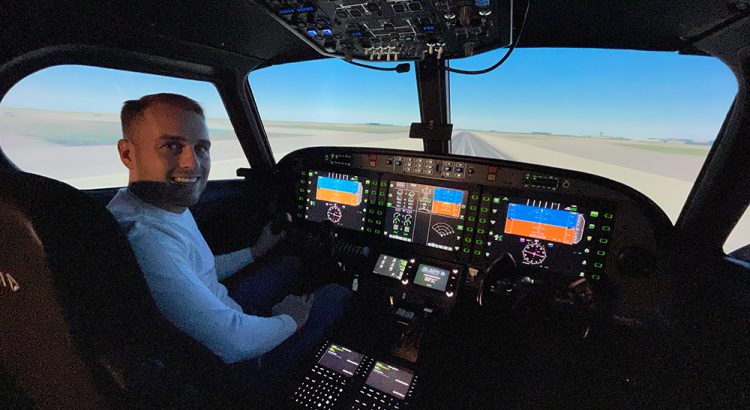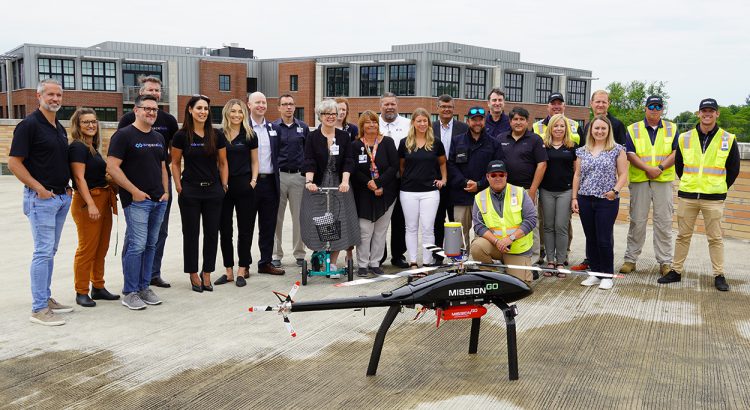As with any membership organization, the year ahead for the Arizona Airports Association (AzAA), promises to bring both challenges and opportunities. Matthew Smith, AzAA’s new President, says the organization is well positioned and equipped to deal with both. “The biggest challenge could be working through some legislative issues,” said Smith. “Some legislators want to […]
Month: June 2022
ALSIM Provides ALX Simulator to Poland’s UnitedSky
ALSIM announced the sale of an ALX to UnitedSky Pilot Academy based in Warsaw, Poland. The ALSIM ALX provides up to 4 classes of aircraft–from single engine piston, twin engine piston, twin turbine up to medium category twin jet. The device is designed and approved for ATPL, CPL, MCC in compliance with all current regulatory […]
EAGLE Leaders Issue Joint Industry/FAA Statement
The following was issued by the leaders of the EAGLE (Eliminate Aviation Gasoline Lead Emissions) initiative following the June 2022 stakeholder update: To advance the common vision of completely eliminating the use of lead in general aviation fuel, a comprehensive update was provided on June 23 to all stakeholders and interested parties by leaders and […]
SkyWest Airlines Withdraws Termination Notice for Salina, KS
As a result of a pilot shortage having an acute impact on the regional airline industry, SkyWest Airlines, Inc. operator of United Express service at the Salina Regional Airport filed a notice to terminate their service at 29 regional airports across the country. Salina Regional Airport was part of this original filing on March 10, […]
MissionGO Provides Michigan’s First Real-World Cargo Delivery Operations via UAS
MissionGO Unmanned Systems, a global leader in uncrewed aircraft systems (UAS) production and operations, and Airspace Link, a leading UAS technology and infrastructure company, teamed up for Michigan’s first real-world cargo delivery operations via UAS. Working in collaboration with Beaumont Health Spectrum Health (BHSH), Michigan Economic Development Corporation (MEDC), NextEnergy, and metropolitan Detroit community leaders, […]
Federal Air Marshal Union Sues TSA for Violating Constitutional Rights
The head of the Federal Air Marshal Service’s Philadelphia office is tampering with performance reviews, pressuring workers to put off necessary medical care, and opening fraudulent investigations in an illegal attempt to harass and suppress his unionized workforce, the Air Marshal Association alleged on Wednesday June 8th. The complaint details how Supervisory Air Marshal in […]
Attorney Peter Sobota Becomes Board Certified in Aviation Law
Attorney Peter Sobota has become Board Certified in Aviation Law. Board certification is the Florida Bar’s official independent determination of a lawyer’s expertise to practice in a specialty field of law. It is the gold standard for Florida lawyers, representing recognition by a lawyer’s peers that they have attained a level of professional expertise in […]
NBAA Welcomes Formation of Congressional AAM Caucus
The National Business Aviation Association (NBAA) today welcomed the creation of the bipartisan Congressional Advanced Air Mobility (AAM) Caucus, which will help educate members about this revolutionary emerging technology. Powered by electric or hybrid propulsion, AAM offers significant potential to improve mobility and complement existing public transportation networks while reducing congestion and carbon and noise […]
NATA Launches New Resource Highlighting Careers in Aviation Business
The National Air Transportation Association has launched the NATA Career Center, a comprehensive resource for industry recruitment and career development. An evolution of NATA’s job board, the NATA Career Center enables members to connect with aviation business professionals worldwide, offers guidance on career changes, educates new and potential aviation industry entrants, and provides resources for […]
Kathy Megarry Named MAC Vice President of Human Resources and Labor Relations
The Metropolitan Airports Commission (MAC) has named Kathy Megarry as the organization’s new Vice President of Human Resources and Labor Relations. “Kathy’s experience in human resources and labor relations in both the public and private sectors will be critical in our efforts to recruit and retain the best talent, diversify our workforce, and expand awareness […]




